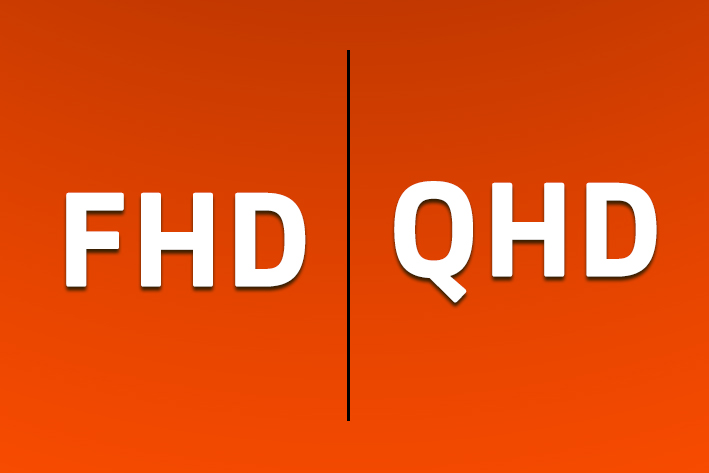QHD vs FHD The Ultimate Guide
What does Full HD mean and what does QHD mean and what are the differences?
Before discussing the differences, we must explain what a Pixel unit is.
It is the light point that is programmed to display colors to form an image and it has a different size from one screen to another the more the number of pixels in one inch the higher the quality.
The resolution is made up of two dimensions, the horizontal and the vertical, such as 1080P resolution, which is 1920×1080.
This means that the width is 1920 and the height is 1080, and to know the number of pixels we multiply the two dimensions 1920×1080, which results in 2073600 pixels.
Now we will return to the differences between FHD and QHD.
The screen is measured by its size in inches, but the panel measurement is in pixels and it has more than one term (Pixel Per Inch PPI – Dots Per Inch DPI)
Whatever the term, the result is one, and the screens’ dimensions determine whether it is FHD or QHD.
Full HD is the standard size currently, and according to the Steam platform, 75% of the platform’s users have this size, which is 1980×1080.
As for QHD, its quality is higher with a size of 2560 * 1440.
Is the difference in sizes affecting performance?
Of course, it affects it, and this is because the graphics card when outputting graphics on a 1080p size requires 50% more performance with 2K quality, which is called QHD and it requires 100% more performance with 4K quality, which is called UHD.
And here, it is necessary to determine the appropriate card for your screen or the device you will use it with.
How to reduce input lag in 3 steps?
If you always feel a delay and see Render Latency always above 15ms, you need to optimize the settings of your graphics card and the game.
1- If you use Nvidia, open the Nvidia Control Panel and go to Manage 3D settings, then go to Low Latency Mode, set it to Ultra, and go to the game settings and turn on Nvidia Reflex On + Boost.
2- If you use AMD, open the Radeon Software, go to settings, then enter graphics, and go to Radeon Anti-lag and set it to Enabled.
3- Turn off V-sync and if you are a competitive player, the frames should be Uncapped. It’s always better to not lock the frames in eSports games as the more frames, the better and faster you will see the details and have less Latency.



Leave a Reply